North Suburban Hammond Organ Service
Pictures of Recent Projects
Here's a look at some work I did on an older (ca 1955 B3). This instrument had no serious mechanical problems, but the insulation on some of the AC power wiring was dry and brittle, so I had to replace this wiring. It also had a Trek II string bass accessory installed, but the installation was very hastily done as the pictures will show, so I needed to reinstall it, and also do this in such a way that the Trek II would not replace the original pedal tones, but work in addition to them, so that any musician who presides at this console will be able to use BOTH the original Hammond pedal sounds and the Trek II either individually or together which gives a lot of interesting pedal effects.
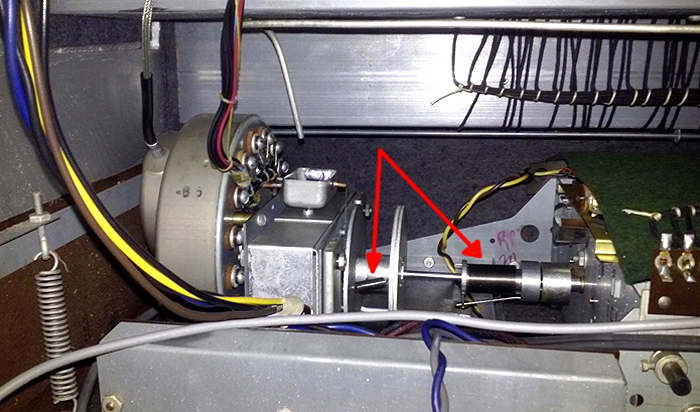
Here is a good look at the synchronous motor that drives the tonewheels, and also the attached vibrato scanner. The red arrows point to the springs which work with the flywheels on the shaft to smooth out the rotation of the tone generator shaft and eliminate any 120 Hz second harmonic power frequency vibration from the synchronous motor.
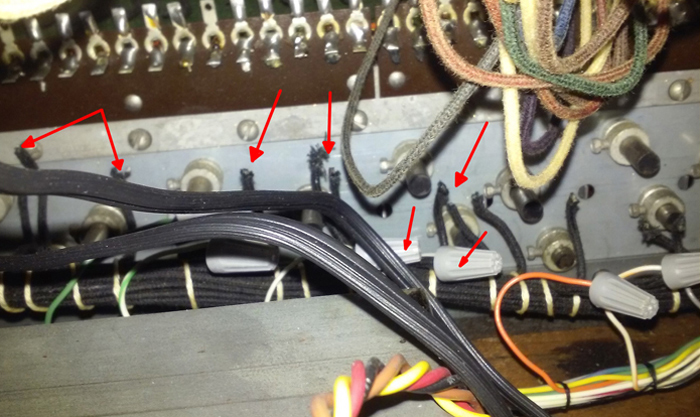
This picture shows the original "hurry-up" installation of the Trek II string bass accessory. Notice the cut ends of the cable to the Hammond pedal switch. If these short out on any part of the Hammond chassis, that may result in a dead note. Likewise, these cut wires completely eliminate the use of the original Hammond pedal tones.
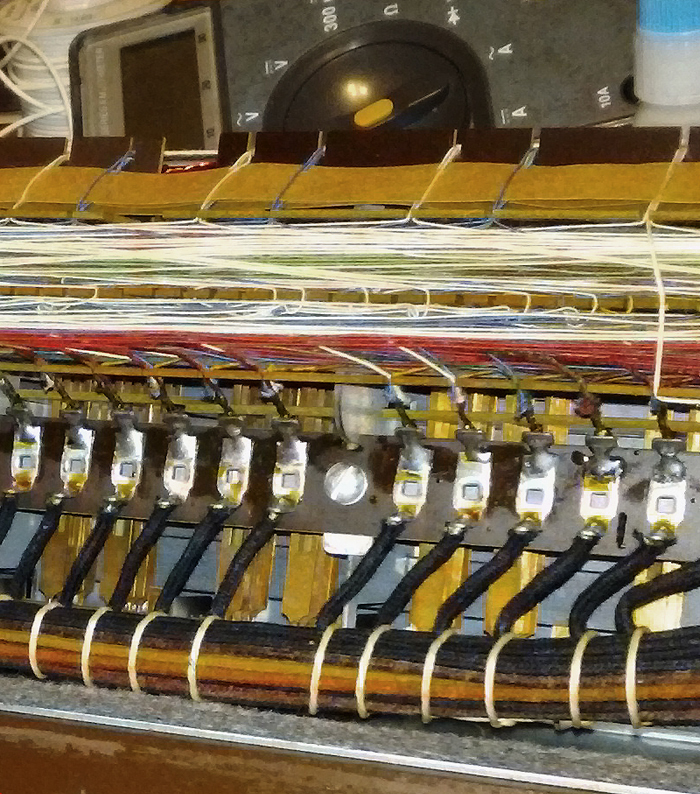
Here we get a good look at one section of the interior of a Hammond pedal switch assembly. The heavier black wires closer to the bottom are the wires that would normally carry the signals from the Hammond tone generator to the pedal switch contacts. Higher up you can see some of the multi-colored lengths of resistance wire that go from the input terminals to the individual pedal switch contacts.
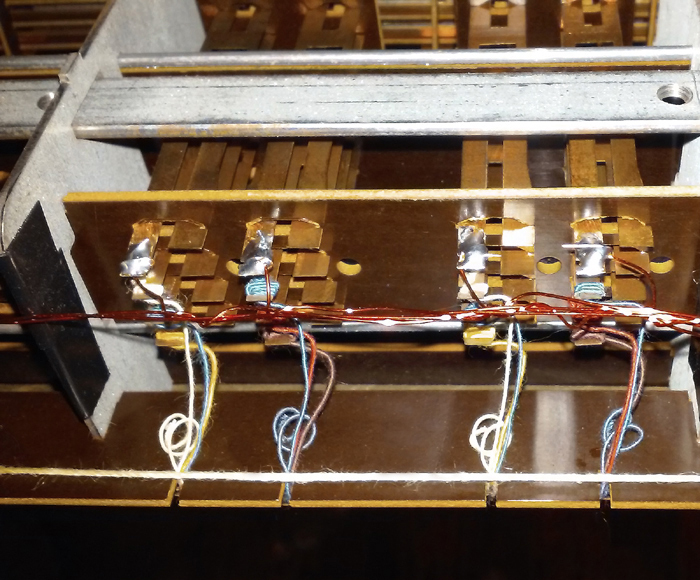
Here you can see the new wires soldered to the Hammond pedal contacts. These wires will now carry the triggering signals to both the Trek II string bass and also for MIDI at such time as we add MIDI capability to this B3. It makes good sense while the pedal switch is opened for adding independent keying for the Trek II that we should also add the MIDI wiring at the same time.
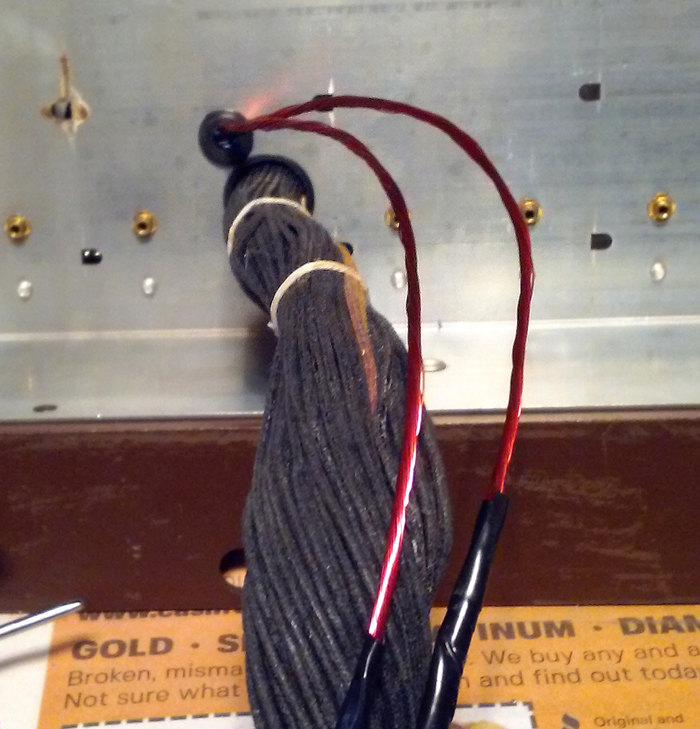
Here you see the new magnet wire cables for the Trek II and MIDI leaving the pedal switch assembly through a rubber grommet.
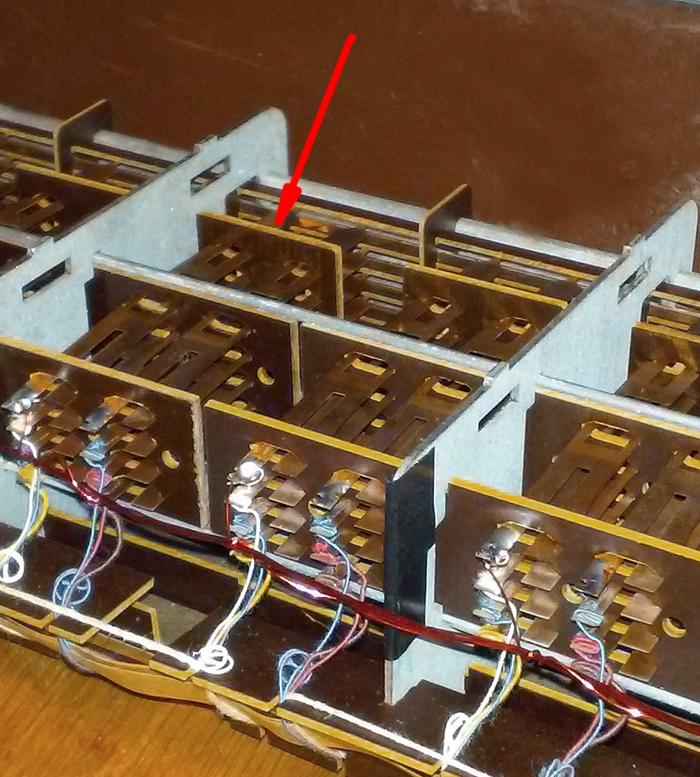
Here's a look at the pedal switch contacts, and the red arrow shows where a small rod from a pedal would push the Bakelite actuator which simultaneously closes all eight individual contacts for each of the B3's pedals. In this picture you can also see the new magnet wire cable for the Trek II string bass.
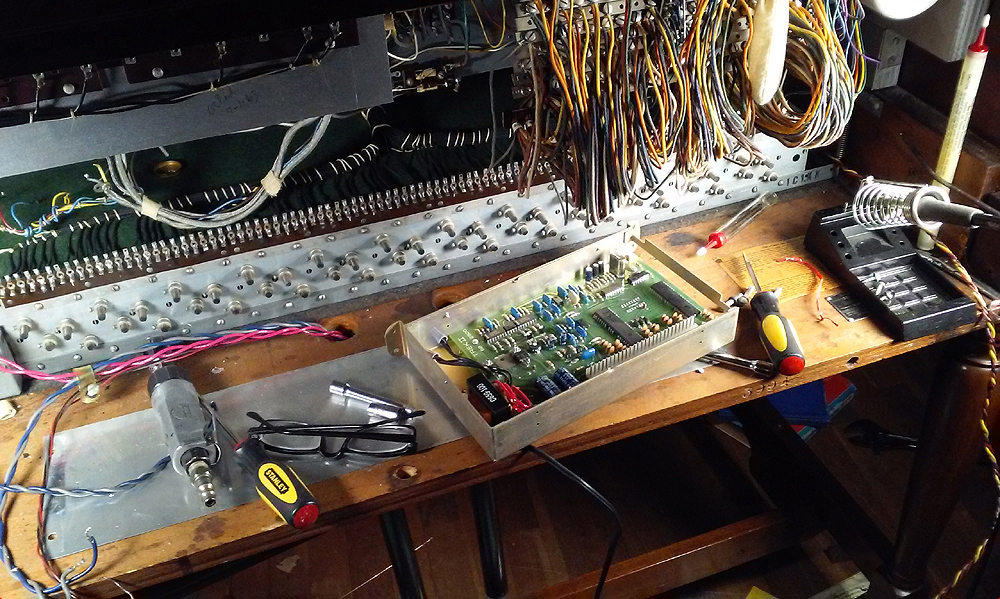
Here's a general view looking into the B3 console. Here, I am replacing the original AC power wiring where its insulation had dried out and was crumbling away, leaving bare wires exposed which would carry 120 volt AC power whenever this instrument was in use. Such wiring is dangerous as it presents both a shock hazard and a potential risk of fire. Crumbling insulation on power wiring is a common problem in many older Hammond organs, and it is always a good idea if you should buy a used instrument, that you check for this problem and have it corrected before you use the instrument. Fortunately, it appears that it is only certain power wiring that presents this problem. The rest of the wiring in older Hammonds has always appeared to be good in every instrument I have checked so far. The twisted wire pairs are all new wire. You can also see the Trek II string bass unit lying on the console shelf in the center of the picture.
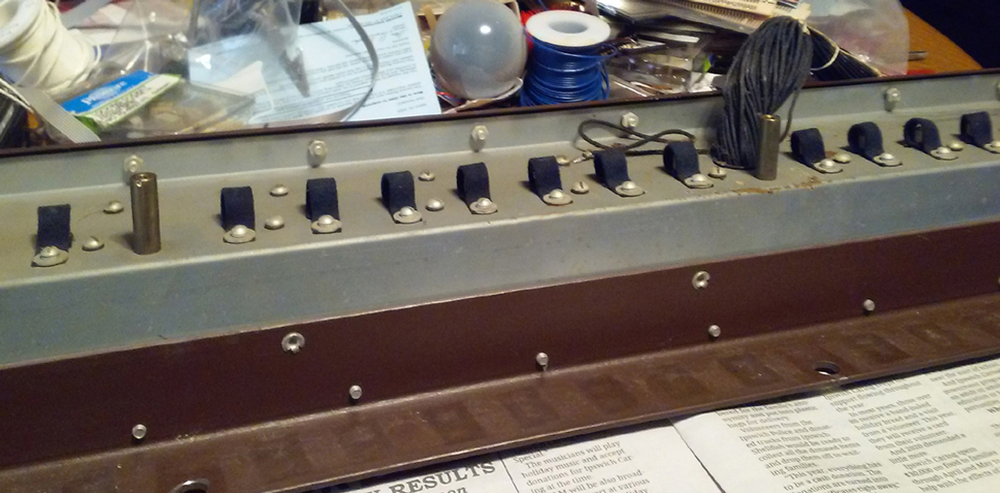
Here's a look at the B3's pedal switch after removing it from the console. Here in the center you can see the original pedal signal cable, (black wires) and also the small felt straps that Hammond paced over each pedal actuator to eliminate mechanical clicking when any pedal spring pushes on its associate actuator. The excellent construction and workmanship in a traditional Hammond organ shows in all of these pictures.
Note that there are two recommended ways of installing a Trek II string bass in a typical Hammond such as a B3 or C3 or A100. One way is to do it as we found in this instrument, which replaces the original Hammond pedal tones with those of the Trek II. This is certainly the easier and simpler way of doing this job. But it should be done carefully. The original pedal cable wires that are not used by the Trek unit must have their cut off ends wire-nutted or otherwise insulated so that they do not short out on the metal of the tone generator or the console preamp chassis. Because all of the relatively low resistance wires of the original pedal contact wiring loom remain in place, any unused pedal wire that touches any part of the tone generator or the preamp chassis becomes grounded, and this can effectively ground wires that are used by the Trek II for keying, thus creating a dead note. Therefore great care should be taken to protect and/or otherwise prevent these wires from shorting out on any grounded metal inside the Hammond console
In my opinion, although much more involved, my recommendation is to retain the original Hammond pedal tones and either use a separate contact rail attached under the existing Hammond pedals, or use one set of original Hammond pedal switch contacts. Doing this will sacrifice the top two pedal harmonics of the original Hammond pedal tone but still leave most of the original Hammond pedal tonalities functional. While it is true that in most pops music, the pedal is played one note at a time, and the Trek II unit likewise plays only one tone at a time, in some classical organ literature, there are instances where the music requires two pedals to be played simultaneously.
Because the Trek II will sustain notes, the sounding of one pedal at a time is a benefit because it prevents sustaining pedal tones from overlapping, which does not sound good. The original Hammond pedal is polyphonic, but it does not sustain. Therefore, by installing the Trek II unit to be independent of, but not to replace, the original Hammond pedal tones is a more musically useful method which is very beneficial especially for an advanced musician who may occasionally or routinely play music calling for the simultaneous use of more than one pedal at a time. Additionally, there are some interesting pedal effects that are possible when being able to play both the Trek II string bass and the original pedal tones together. The Trek II is a very fine product, very beneficial and musically useful and indeed a very worthwhile addition to any traditional Hammond organ. In my opinion, it is worth the extra time and effort to be able to use both, the Trek II and the original Hammond pedal tones either singly or together. But whichever method anybody chooses for installing a Trek II in a Hammond, it is of paramount importance that all of the work gets done very carefully, safely, and in such a manner that there are no cut wires with exposed ends that can possibly short against any of the metal parts in the console. And this pertains to ANY work that is done in a Hammond console, even other routine repairs. Remember this rule: heedless hurry, endless worry.